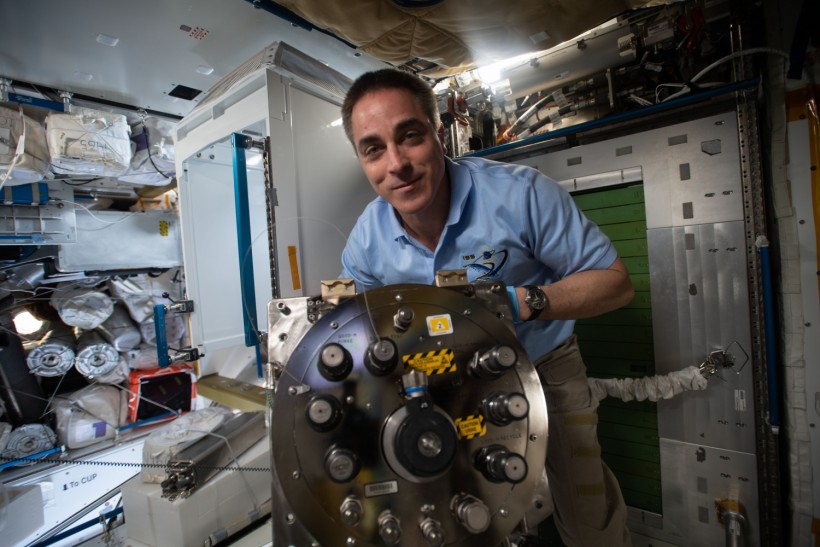NASA has revealed that the International Space Station (ISS) is recycling 98% of all water astronauts bring onboard the station.
According to Space.com, the space agency said they had achieved this water recovery rate using a system that includes astronauts' pee and sweat recycling into drinkable water.

(Photo : NASA)
Fine-tuning hardware technology to increase durability and minimize the need for replacements is a driving factor for Environmental Control and Life Support Systems (ECLSS) engineers supporting air and water recycling on the International Space Station.
NASA Says ISS Crew Achieves 98% of the Water Recovery Rate
Astronauts aboard the International Space Station have recently achieved a 98% water recovery rate methods that include "advanced dehumidifiers."
According to Engadget, this system is capturing moisture the station's crew breaths and sweat out as they perform their daily tasks. Aside from this, the crew is also recovering astronauts' pee through "vacuum distillation."
This other subsystem, called "Urine Processor Assembly" (UPA), produces water and a urine brine that still contains reclaimable H20.
NASA recently started testing a new device that can extract what water remains in the brine, and because of that system, NASA observed a 98% water recovery rate on the ISS.
The station was previously recycling about 93% to 94% of the water astronauts were bringing aboard. ISS team member Christopher Brown was delighted to share this news.
He described this achievement by the International Space Station's Environmental Control and Life Support System (ECLSS) as a huge milestone, knowing that each crewmember needs a gallon of water daily for drinking, food preparation, and hygiene uses like brushing teeth.
According to Brown, this "is a very important step forward in the evolution of life support systems."
"Let's say you launch with 100 pounds of water. You lose 2 pounds of that, and the other 98% just keeps going around and around. Keeping that running is a pretty awesome achievement," Brown added.
NASA stated that this breakthrough would make the crewmembers lessen their worries and could shift their focus on the true intent of their mission.
ISS Crew Drinking Urine in Space?
While it may seem odd, ECLSS water subsystems manager Jill Williamson noted that recycling urine was nearly similar to some terrestrial water distribution systems but just done in microgravity.
She clarified that astronauts are not drinking urine as they drink water "that has been reclaimed, filtered, and cleaned such that it is cleaner than what we drink here on Earth."
Space.com reported that the UPA element of the ECLSS distills urine, but the brine is produced as a by-product of this process, which still contains some unused water.
NASA added a Brine Processor Assembly (BPA) to the UPA to extract this remaining wastewater, and this BPA made the ECLSS reach the 98% goal.
"Before the BPA, our total water recovery was between 93 and 94% overall... We have now demonstrated that we can reach [a] total water recovery of 98%, thanks to the brine processor," said Williamson.
Williamson noted that they have a lot of processes in place and many ground testing to provide confidence that they are producing clean, potable water.
The ECLSS systems are reportedly being carefully tested to make sure they are performing as intended and to demonstrate each element can function long-term without requiring much maintenance or replacement spare parts.
Related Article: NASA's 1st Moon Base Camp: Astronauts' Urine Can Be Used As Raw Material, Experts Say










